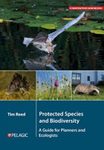About this book
Ecological indicators address ecosystems structure and/or function and are commonly used to provide synoptic information about their state. Through quantitative representations of either the forces that steer ecosystems, responses to forcing functions, or of previous, current, or future states of an ecosystem, indicators are expected to reveal conditions and trends that will help in development planning and decision making processes. Ecological indicators combine numerous environmental factors in a single value, which may be useful in terms of management and in the development of ecological concepts, compliant with the general public's understanding. Nevertheless, their application is not exempt of criticisms, the first of which is that aggregation results in an oversimplification of the ecosystem under observation.
Ecological indicators must therefore be handled following the right criteria and in situations that are consistent with its intended use and scope; otherwise they may drive to confusing interpretations of data. Despite the evident convergence of ideas between different authors, it is clear that what a good indicator should be does not gather unanimity of opinions. The present book provides an updated revision and examples of application of indicators available to assess the status of coastal and transitional ecosystems. Moreover, a decision tree to be used as guidance in selecting which indicators should be applied in any particular case involving benthic fauna is proposed. Finally, differences in performance of various indicators are illustrated through a series of case studies on marine and estuarine ecosystems.
Contents
1 Introduction What are indicators and what is their utility?; What are the characteristics of a good indicator?; Book structure 2 Review of ecological indicators and their characteristics Brief reference to terrestrial ecological indicators; Brief reference to freshwater ecological indicators; Review of the ecological indicators used in assessing coastal and marine environments; Brief review of socio-economic indicators: the case of coastal environments 3 Decision tree for selecting ecological indicators based on benthic invertebrate fauna data sets Selecting ecological indicators: practical constrains; Decision tree 4 Decision tree for selecting adequate indices or ecological indicators: examples of application Description of the study areas and the types of data available; Indicator selection as a function of data availability; Results of the application; Was the ecological indicator's performance satisfactory in the case studies? 5 Combining indicators to characterise a system's ecological quality status Ecological quality status assessment - multimetric approaches within the WFD; Final remarks
Customer Reviews
Biography
Joao Carlos Marques, has been a professor in the Department of Zoology at the IMAR - Institute of Marine Research, Faculty of Sciences and Technology, University of Coimbra, Portugal, since 2004. He is also the winner of the Prize of Scientific Excellence, Portuguese Foundation for Science and Technology, (2005). His research specialties are Biological and Ecological processes in aquatic ecosystems; Environmental quality assessment and management; Ecological modeling and his current research involves Communities structure and functioning; Populations biology, dynamics, and production; Pollution and environmental quality assessment; Ecological Indicators; and Network analysis. He is a member of the Editorial Board of Ecological Modelling, Associate Editor of Journal of Crustacean Biology; Executive Editor of Acta Oecologica, Associate Editor of The Scientific World, and a member of the Editorial Board of International Journal of Ecodynamics. He has authored or co-authored numerous books, book chapters, and scientific papers in his field and is a member of the Portuguese Biologists Association; the Portuguese Natural Sciences Society; the Portuguese Centre of Underwater Activities; the Portuguese Ecological Society; the Crustacean Society; the European Association of Marine Sciences and Techniques (EAMST); the International Society for Ecological Modelling (ISEM); the International Ecological Engineering Society (IEES); and the American Society of Limnology and Oceanography (ASLO) Fuensanta Salas is currently with the Department of Ecology and Hydrology, Faculty of Biology, University of Murcia, Spain where her research interests include the study of marine and estuarial ecosystems, ecological indicators, and environmental management. From 2002 to 2004 she was a researcher at the IMAR (Instituto do Mar), at the Universidade de Coimbra. She has participated in numerous scientific projects and authored or co-authored various works on the development validation of ecological indicators in scientific journals and book chapters. Since 2006, Joana Patricio has been a Tenured Associate Professor with IMAR - Institute of Marine Research, Faculty of Sciences and Technology, University of Coimbra, Portugal. Professor Patricio has participated in many projects and written or co-written papers, book chapters, and conference presentations in the field of coastal and marine ecological modeling. Joao Neto and Heliana Lilita are also with the IMAR - Institute of Marine Research, Faculty of Sciences and Technology, at the University of Coimbra, Portugal.




























